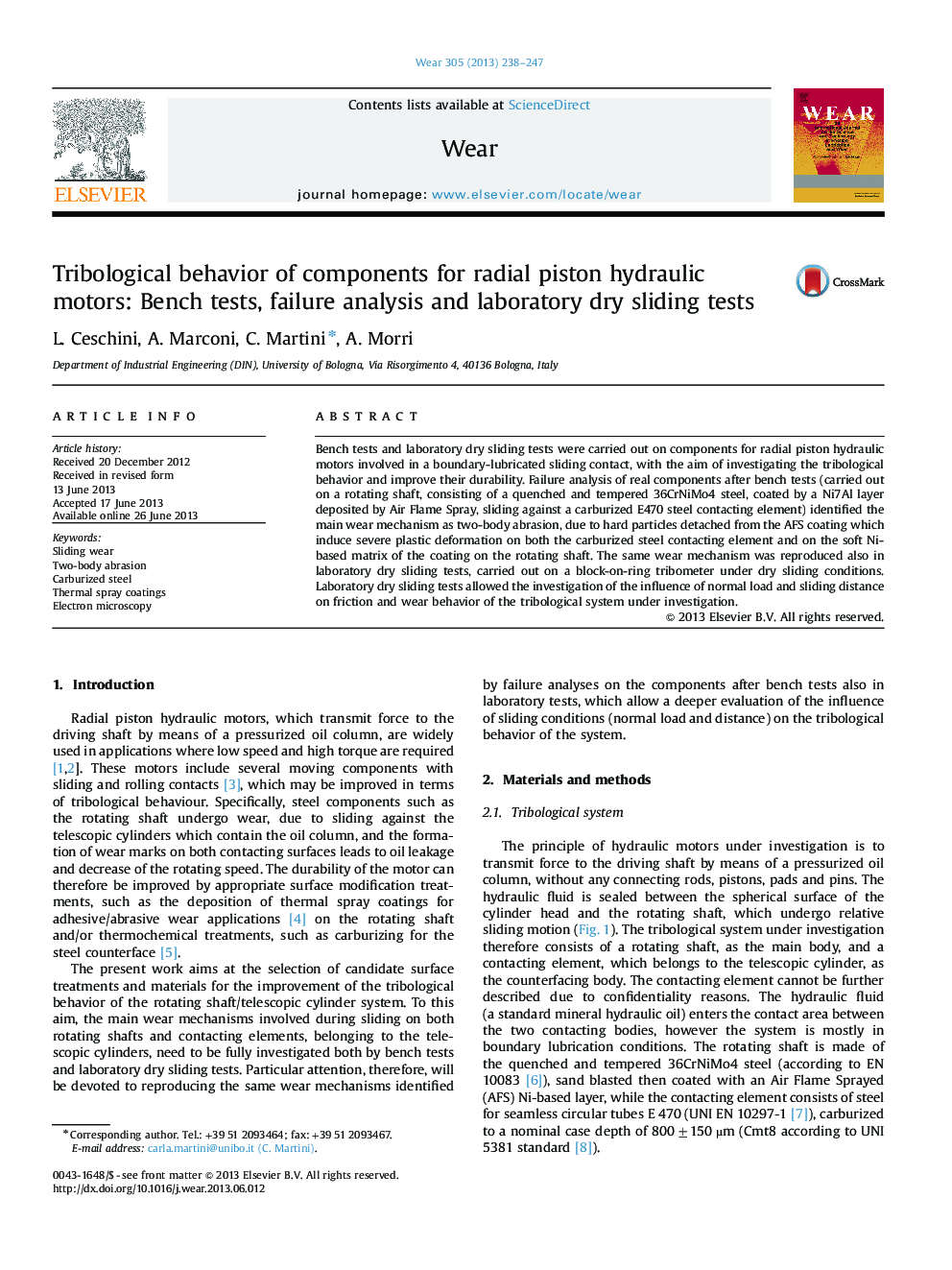| Article ID | Journal | Published Year | Pages | File Type |
|---|---|---|---|---|
| 7004690 | Wear | 2013 | 10 Pages |
Abstract
Bench tests and laboratory dry sliding tests were carried out on components for radial piston hydraulic motors involved in a boundary-lubricated sliding contact, with the aim of investigating the tribological behavior and improve their durability. Failure analysis of real components after bench tests (carried out on a rotating shaft, consisting of a quenched and tempered 36CrNiMo4 steel, coated by a Ni7Al layer deposited by Air Flame Spray, sliding against a carburized E470 steel contacting element) identified the main wear mechanism as two-body abrasion, due to hard particles detached from the AFS coating which induce severe plastic deformation on both the carburized steel contacting element and on the soft Ni-based matrix of the coating on the rotating shaft. The same wear mechanism was reproduced also in laboratory dry sliding tests, carried out on a block-on-ring tribometer under dry sliding conditions. Laboratory dry sliding tests allowed the investigation of the influence of normal load and sliding distance on friction and wear behavior of the tribological system under investigation.
Related Topics
Physical Sciences and Engineering
Chemical Engineering
Colloid and Surface Chemistry
Authors
L. Ceschini, A. Marconi, C. Martini, A. Morri,
